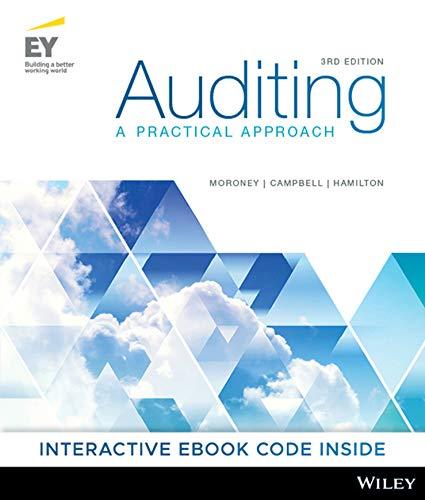Question
Lou Barlow, a divisional manager for Sage Company, has an opportunity to manufacture and sell one of two new products for a five-year period. His
Lou Barlow, a divisional manager for Sage Company, has an opportunity to manufacture and sell one of two new products for a five-year period. His annual pay raises are determined by his divisions return on investment (ROI), which has exceeded 22% each of the last three years. He has computed the cost and revenue estimates for each product as follows:
Please answer all questions and show your work, math and explanations. Thank you very much.
| Product A | Product B | ||||
| Initial investment: | |||||
| Cost of equipment (zero salvage value) | $ | 350,000 | $ | 550,000 | |
| Annual revenues and costs: | |||||
| Sales revenues | $ | 390,000 | $ | 470,000 | |
| Variable expenses | $ | 178,000 | $ | 210,000 | |
| Depreciation expense | $ | 70,000 | $ | 110,000 | |
| Fixed out-of-pocket operating costs | $ | 87,000 | $ | 67,000 | |
The companys discount rate is 20%.
Required:
1. Calculate the payback period for each product. (Round your answers to 2 decimal places.)

2. Calculate the net present value for each product. (Round discount factor(s) to 3 decimal places.)

3. Calculate the internal rate of return for each product. (Round percentage answers to 1 decimal place. i.e. 0.1234 should be considered as 12.3% and round discount factor(s) to 3 decimal places.)

4. Calculate the project profitability index for each product. (Round discount factor(s) to 3 decimal places. Round your answers to 2 decimal places.)

5. Calculate the simple rate of return for each product. (Round percentage answers to 1 decimal place. i.e. 0.1234 should be considered as 12.3%.)

6a. For each measure, identify whether Product A or Product B is preferred.

6b. Based on the simple rate of return, Lou Barlow would likely:
| Accept Product A | |
| Accept Product B | |
| Reject both products |
Step by Step Solution
There are 3 Steps involved in it
Step: 1

Get Instant Access to Expert-Tailored Solutions
See step-by-step solutions with expert insights and AI powered tools for academic success
Step: 2

Step: 3

Ace Your Homework with AI
Get the answers you need in no time with our AI-driven, step-by-step assistance
Get Started


